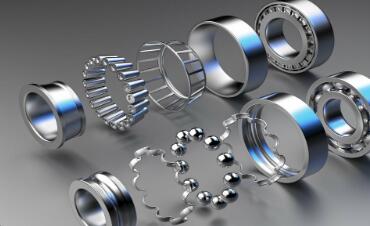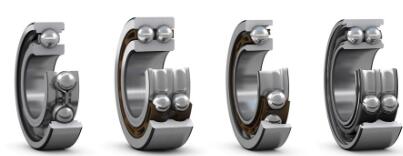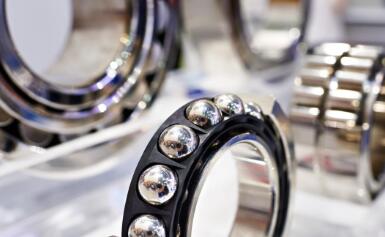Finding the Right Single Row Deep Groove Ball Bearing for Your Application
Learn how to find the right single-row deep groove ball bearing for your application.
Improve performance, reduce noise and vibration, and increase durability.
As an engineer or maintenance professional, finding the right single-row deep groove ball bearing for your application can be challenging.
With so many options available, it can be difficult to determine which one is best for your needs.
In this article, we will guide you through the process of selecting the right bearing, highlighting the benefits and key considerations to keep in mind.
The right single-row deep groove ball bearing for your application depends on factors such as load capacity, noise and vibration levels, and durability requirements.
Choosing the right bearing can improve performance, reduce noise and vibration, and increase durability. It is important to consider these factors when selecting a bearing.
Whether you are new to the field or a seasoned professional, this article will provide you with valuable insights on how to choose the right single-row deep groove ball bearing for your application.
We will share our expertise and experience to help you optimize performance, reduce noise and vibration, and increase durability.
Definition of single row deep groove ball bearing
A single-row deep groove ball bearing is a type of rolling-element bearing that features a single row of balls running along a deep groove in the inner and outer raceways.
This design allows for the bearing to handle both radial and axial loads, making it a versatile option for many different applications.
The inner and outer raceways of a deep groove ball bearing are typically made of hardened steel, while the balls are made of a variety of materials, including steel, ceramic, or even plastic.
The balls are held in place by a cage, which keeps them evenly spaced and prevents them from rubbing against one another.
The term "deep groove" refers to the fact that the raceways have a relatively large diameter compared to the size of the balls.
This allows for a larger contact area between the balls and the raceways, which helps to distribute the load more evenly and reduce friction.
Single-row deep groove ball bearings are commonly used in a wide variety of applications, including electric motors, automotive components, industrial machinery, and more.
They are known for their reliability, durability, and ease of installation, making them a popular choice for many engineers and manufacturers.
When selecting a single-row deep groove ball bearing, it is important to consider factors such as the expected load, operating speed, temperature, and environment.
Bearings can be customized to meet specific requirements, with options such as different materials, lubrication, and seals available.
Types of Single Row Deep Groove Ball Bearings

A. Radial single row deep groove ball bearing:
A radial single row deep groove ball bearing is a type of single row deep groove ball bearing that is designed to primarily handle radial loads.
These bearings have a deep groove in the inner and outer raceways, with a single row of balls running along the groove.
The balls are held in place by a cage, which ensures they are evenly spaced and prevents them from rubbing against each other.
Radial single row deep groove ball bearings are commonly used in applications that require high radial loads, such as electric motors, pumps, and conveyor systems.
They are also known for their durability, reliability, and ease of installation.
B. Angular contact single row deep groove ball bearing:
An angular contact single row deep groove ball bearing is a type of single row deep groove ball bearing that is designed to handle both radial and axial loads.
These bearings have a contact angle between the raceways and the balls, allowing them to support both radial and axial loads.
Angular contact single row deep groove ball bearings are commonly used in applications that require high-speed rotation or where there are both radial and axial loads present, such as machine tools and pumps.
They are also known for their ability to withstand high temperatures and are available in a range of sizes and configurations.
C. Four point contact single row deep groove ball bearing:
A four point contact single row deep groove ball bearing is a type of single row deep groove ball bearing that is designed to handle both radial and axial loads.
These bearings have four points of contact between the raceways and the balls, which allows them to support both radial and axial loads.
Four point contact single row deep groove ball bearings are commonly used in applications where there are both radial and axial loads present, such as cranes, excavators, and robotics.
They are known for their ability to handle heavy loads and their ability to maintain accurate positioning, even in high-speed applications.
The three types of single row deep groove ball bearings - radial, angular contact, and four point contact - are designed to handle different types of loads and are commonly used in a variety of applications.
It is important to choose the right type of bearing for each application to ensure optimal performance and reliability.
Benefits of Single Row Deep Groove Ball Bearings

A. Increased load capacity:
One of the primary benefits of single-row deep groove ball bearings is their ability to handle both radial and axial loads, making them highly versatile.
The deep groove design allows for a larger contact area between the balls and the raceways, which helps distribute the load more evenly and reduces friction.
This results in increased load capacity compared to other types of bearings, allowing for higher load-carrying capacity and longer bearing life.
B. Low noise and vibration:
Single-row deep groove ball bearings are known for their low noise and vibration levels, which is important in many applications.
The even distribution of load across the balls and raceways helps reduce vibration and noise, resulting in smoother operation and less wear and tear on the bearing.
Additionally, the use of high-quality materials and precision manufacturing techniques further contributes to low noise and vibration levels.
C. Durability and corrosion resistance:
Single-row deep groove ball bearings are highly durable and corrosion-resistant, making them suitable for use in harsh environments.
The use of high-quality materials, such as hardened steel for the raceways and balls, provides excellent durability and resistance to wear and tear.
Additionally, bearings can be treated with coatings or seals to further protect against corrosion and other forms of damage.
Furthermore, single-row deep groove ball bearings require minimal maintenance, making them a cost-effective solution for many applications.
The design of the bearing allows for easy installation and removal, and the use of grease or other lubricants helps reduce friction and wear.
Single row deep groove ball bearings offer a range of benefits, including increased load capacity, low noise and vibration, and durability and corrosion resistance.
These characteristics make them a versatile and reliable option for a wide range of applications, from electric motors to industrial machinery.
Applications of Single Row Deep Groove Ball Bearings

A. Automotive applications:
Single-row deep groove ball bearings are commonly used in the automotive industry due to their ability to handle both radial and axial loads.
They are used in a range of automotive applications, including wheel bearings, transmissions, engines, and suspension systems.
The even distribution of load across the balls and raceways helps reduce friction and wear, resulting in longer bearing life and improved performance.
Additionally, the low noise and vibration levels make them a popular choice for automotive applications.
B. Industrial machinery:
Single-row deep groove ball bearings are widely used in industrial machinery due to their versatility and durability.
They are used in a range of applications, including conveyor systems, pumps, machine tools, and gearboxes.
The ability to handle both radial and axial loads makes them suitable for many different types of machinery.
Additionally, the low noise and vibration levels make them a popular choice for precision applications where noise and vibration can affect performance.
C. Electrical motors:
Single-row deep groove ball bearings are commonly used in electrical motors due to their ability to handle radial loads.
They are used in a range of applications, including fans, blowers, and pumps.
The low noise and vibration levels make them a popular choice for electrical motors, where noise and vibration can affect performance.
Additionally, the use of high-quality materials and precision manufacturing techniques provides excellent durability and resistance to wear and tear, resulting in longer bearing life and improved performance.
Single row deep groove ball bearings are used in a wide range of applications, including automotive, industrial machinery, and electrical motors.
Their ability to handle both radial and axial loads, low noise and vibration levels, and durability and resistance to wear and tear makes them a versatile and reliable option for many different types of machinery and applications.
Conclusion
By selecting the right single-row deep groove ball bearing for your application, you can improve performance, reduce noise and vibration, and increase durability.
We hope this article has provided you with valuable insights and guidance on how to choose the right bearing for your needs.
Remember to consider factors such as load capacity, noise and vibration levels, and durability when making your selection.





